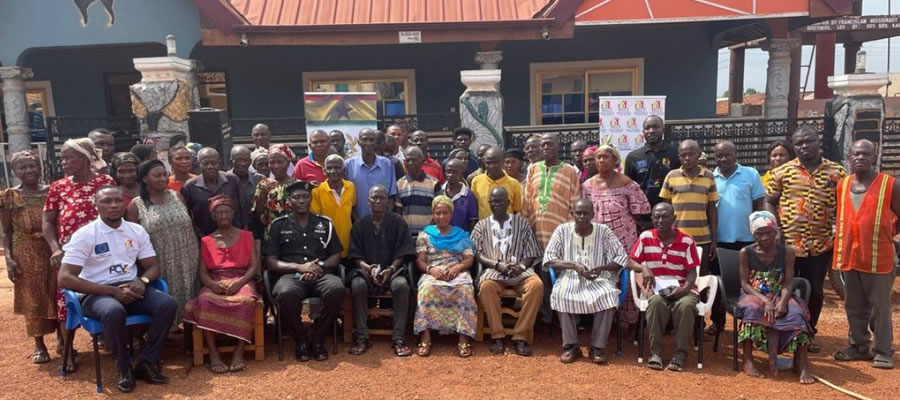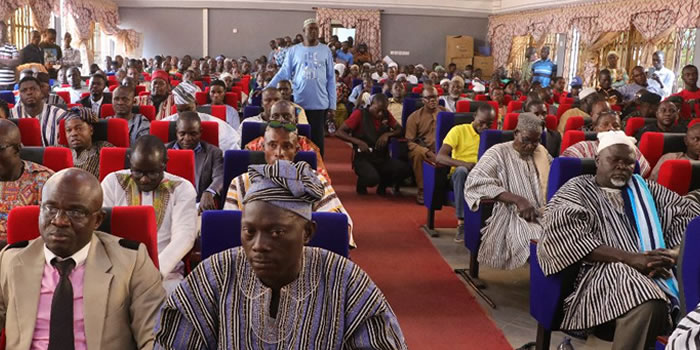

With respect to industry of employment, agriculture forestry and fishing is the leading sector of employment in the district. From Table 4.4, this sector employs as high as 93.5 percent of the employed population 15 years and older, broken down into 96.3 percent males and 90.5 percent females. Manufacturing is represented by 2.4 percent of employed persons in the district with a breakdown as 0.8 percent males and 4.0 percent among the females. Wholesale and retail represents only 2.3 percent of the employed population in the district.
Employment Status
Table 4.5 shows that out of a total employed population 15 years and older, 50.2 percent is self-employed without employee(s) and 45.1 percent are represented by contributing family workers. A higher proportion of the males (63.7%) are self-employed without employee(s) than their female counterparts (35.8%). In contrast, however, the proportion of females (3.0%) who are self-employed with employee(s) is relatively higher than males (1.4%) in the district. Apprentice, domestic employees and casual workers together form less than one percent of the employed population 15 years and older in the district. This is largely accounted for by the rural character of the district.
Employment Sector
This refers to the sector of employment in which the respondents were working at the time of the census or where they were employed as of the census night. Table 4.5 indicates that the private informal sector provides employment for 98.1 percent and followed by the public sector with 0.7 percent of the district’s population 15 years and older. The table also shows that there is virtually no difference between the males (98.0%) and females (98.2%) that are employed in this sector. The other sectors, private formal, semi-public/parastatal, and NGOs (Local and International) together account for the remaining two percent of the employed population 15 years and older in the district.
Date Created : 11/21/2017 6:40:27 AM









 facebook
facebook
 twitter
twitter
 Youtube
Youtube
 +233 593 831 280
+233 593 831 280 0800 430 430
0800 430 430 GPS: GE-231-4383
GPS: GE-231-4383 info@ghanadistricts.com
info@ghanadistricts.com Box GP1044, Accra, Ghana
Box GP1044, Accra, Ghana